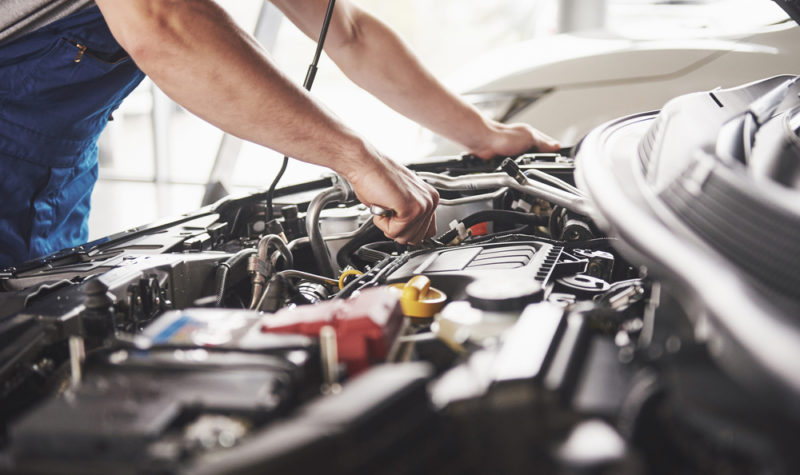
There are many options for discreet car cameras. Vantrue N4 (and BlackVue DR900S-2CH) are the two best choices for car monitoring. This article will examine the pros and cons of each device to help you determine how they can increase your security and safety. For those who don't want unwanted sound, you may also be interested in a camera equipped with a microphone or speaker. To reduce power consumption, these devices can be connected to a power source.
Miofive
Although the discreet Miofive car cameras are small and discrete, they can record footage. These cameras feature artificial intelligence to detect movements and have a 140° field of vision. The small calibration screen makes it simple to use the camera. The dashcam can be installed in your car and connected to the app to calibrate. Once calibrated, you are able to view the recorded footage and download it from the app.

Nextbase 622GW
The Nextbase 622GW has a 3'' touchscreen, built-in GPS, and Bluetooth connectivity. It connects to smartphones via the Nextbase app, but it has some drawbacks. The app doesn't look as smooth as a phone's screen.
BlackVue SDR900S-2CH
BlackVue DR900S-2Ch, the first 4K UHD Cloud connected dash cam and the company’s most versatile dual camera model, is now available. Both the rear and front cameras record 4K UHD video. The rear camera records Full HD 1080p with Sony STARVIS CMOS sensor. These cameras will provide precise location information that can be used to prevent theft or cloning of your car.
Vantrue N4
Vantrue N4 discreet camera for cars is a great way of monitoring your vehicle. Its features include a Variable Sensitivity G-sensor that detects sudden shake or collision. The camera automatically locks all footage into an event file if there is a sudden collision. The optional GPS feature on the camera tracks your location, speed, as well as route. External memory is possible up to 256GB. The Vantrue N4 doesn't have WiFi support, unlike many other car cameras.

Garmin 67W
You can keep an eye on your surroundings by installing a dash cam in your vehicle. Garmin Dash Cam 57 provides a 140-degree field and records important details with 1440p HD video. This device is an easy and effective way to record everything that happens inside your vehicle. With the included remote control, you can also record video in slow-motion. Here are a few reasons you should consider buying a dashcam.
FAQ
What qualifications do I need to become a mechanic?
To become a technician, you will need to pass a series exams. These include:
-
A general knowledge assessment
-
Practical exam
-
An apprenticeship test
These tests are designed to ensure that you understand the basic concepts of mechanical engineering and physics before you start working as a mechanic.
After passing these tests, you will be eligible to become a mechanic. You will still need to complete an apprenticeship. This will involve training in your trade.
To learn all there is to know about fixing vehicles, you will need workshops and classes. It will be necessary to work alongside experienced mechanics.
A mechanic must be highly focused and attentive to detail in order to succeed. Vehicle repairs require you to be very attentive.
To be a successful mechanic, you will need patience and perseverance. This may not be the career path that you want if you aren't able to follow directions.
This job is for you if you are passionate about cars and love fixing them.
What length of an automotive course is it?
An automotive course is three years long.
The first year is spent on theory, learning all about cars. The second year will be spent in practical training. Here you will learn how fix engines, drive and other mechanic jobs. The final year is spent doing a placement at a local garage, which gives you experience in fixing real-world problems.
What is the average time it takes to become a mechanic?
A mechanic is only an expert if they have years of experience. It is best to learn how to fix cars under the supervision and guidance of a professional mechanic.
You will need to spend some time in a garage to learn as much about cars and mechanics as possible. It is important to get familiar with the mechanics of cars and engineering.
And you'll also need to attend auto school.
The most important thing is to start early. It doesn't matter if you're old or not to study automotive technology. You can get certified as a mechanic by getting started right away!
What is the difference between an automotive technician and a mechanic?
Although they may be similar, they are not identical. A mechanic repairs cars and an automotive technician performs maintenance.
A mechanic should be able to do simple tasks quickly and have good manual dexterity. They must also be able to diagnose problems accurately and repair them effectively.
An automotive technician is required to have more technical knowledge than a mechanic. They must be able and able to read blueprints as well as use tools like drills or wrenches.
They must also be able perform complex procedures safely. They should also be familiarized with the different types of engines as well as electrical systems.
They must also be able comprehend how the various parts interrelate with one another.
A mechanic typically earns less than an automotive technician. There are many job opportunities in both.
Is being a mechanic apprentice hard?
Although it's not an easy task, you will learn quickly and have many opportunities to advance.
You must have patience and perseverance. You must also know how to fix cars, trucks, and motorcycles.
Customers and family members can put a lot pressure on you. They want you to succeed. However, you shouldn't be forced to make difficult decisions.
This could be an excellent career choice for someone who enjoys fixing cars. You can make a decent living and build your business.
Perhaps you prefer a different route. This is where you might be interested in becoming a technician.
This requires you to use your technical expertise in support of other workers. You might be able to assist technicians in troubleshooting problems or teach them new techniques.
Another option is to become a service advisor. As a service advisor, you will provide assistance and advice to customers as they bring their car to a garage.
Your decision depends on what you want to do. There are plenty of options available, and you can choose which suits you best.
What are the requirements for an automotive technician?
You need to have high school diploma or GED and good grades in English as well as maths. You must also be able to read, and write. Before you can start working, you will have to pass a written exam and take a series practical tests.
Statistics
- The U.S. Bureau of Labor Statistics (BLS) reports that the job outlook for automotive service technicians and mechanics is expected to decline by 4% from 2019 to 2029. (indeed.com)
- 52% of Mechanics in the United States think their salaries are enough for the cost of living in their area. (indeed.com)
- There were 749,900 jobs available for automotive service technicians and mechanics in 2016, which is expected to grow by six percent through 2026. (jobhero.com)
External Links
How To
How to properly diagnose your vehicle for repair
First, look at the symptoms of your car to determine if it needs repair. These steps will help you diagnose your car properly.
-
Check engine lights. Make sure to check all dashboard indicators like the engine light indicator (oil pressure gauge), the battery indicator (battery light indicator), and the RPM indicator (rpm gauge). If any of them have been flashing for several days, it may mean something is wrong with your vehicle.
-
Check the treads of your tires. Tires that are worn can cause issues with handling and braking. It is also important to inspect the wheel treads. They should be clean, and they should be smooth. It is best to take off the wheels and remove them. To check the condition of your treads, use a flashlight.
-
Monitor the level and consistency of your brake fluid. It is important to keep track of how much brake fluid you have in your car. This will ensure your brakes function properly. Low brake fluid levels could cause your brakes to fail when you apply pressure.
-
Test the suspension system. Most vehicles have a suspension system that absorbs shocks and vibrations. It gives you better control and allows for smoother accelerations and decelerations. Your vehicle might feel wobbly, or shake uncontrollably if it has a bad suspension. You can test if your vehicle has a suspension problem by putting weight on either the front or back axle to see how it moves.
-
Examine the steering column. Steering columns are used to connect the steering wheel to the rest of the vehicle's components. Steering columns can be damaged by accidents. It is recommended to replace any steering column that feels loose, or shakey.
-
The exhaust pipe should be observed. Exhaust pipes move gases from combustion chamber to atmosphere. If the exhaust pipe is damaged or leaks, harmful fumes can enter your cabin. Additionally, your tailpipe should be fixed immediately if it is bent.
-
Look under your hood. Take a look underneath the hood to find any strange or unusual items. Leakage of fluids in your engine could indicate that it is leaking. If you smell something strange coming from your engine compartment you should call a professional technician.
-
You should inspect your air filter. The outside environment can collect dust and other debris in your vehicle's air filters. A dirty air filter causes your vehicle to run poorly. Replace your air filter regularly.
-
Check the fan belt. Your vehicle's fanbel is what connects the engine and the transmission. If the fanbel breaks, your engine won't turn. It's easy to replace the belt. You will need a screwdriver, pliers and a pair of pliers.
-
The radiator hose and hoses should be checked. The radiator hose is used to carry water from the radiator to your engine. It can become cracked or damaged and leak hot liquid onto your engine. The hose can be repaired with a pair or needle-nosepliers, and a wire brush.
-
Be sure to inspect your windshield wipers. Windshield wipers use electricity to remove snow and rain. If they stop working, they could leave streaks on your window glass. The solution is to change the washer fluid.
-
Make sure you check the cables. Batteries provide power to electrical systems inside your car. Always disconnect the negative wire before you replace batteries. Failure to do so can damage your alternator.
-
Pay attention to your headlights. Headlights illuminate the road ahead of you. It can lead to poor visibility if they aren't working properly. Inspect the bulbs for signs of burnt out.
-
Always check your lights. Lights warn other drivers when you approach them at night. It could cause distraction and even lead to an accident if it doesn't work.
-
Check the brakes. Before you have a collision, brakes slow down your car. If your brakes aren't working properly, you may lose control and crash into other cars.
-
Make sure to change the oil. Oil keeps your engine lubricated. It helps prevent metal parts from wearing out too quickly. It is recommended that the oil be changed every other month.